Machine Learning-Aided Analysis of the Rolling and Recrystallization Textures of Pure Iron with Different Cold Reduction Ratios and Cold-Rolling Directions
Abstract
:1. Introduction
2. Materials and Methods
3. Results and Discussion
3.1. Effect of the Cold Reduction Ratio (Comparison of Specimens 90 and 30)
3.2. Effect of the Cold Reduction Ratio at Each Stage (Comparison of Specimens 60A and 60B)
3.3. Effect of Cold-Rolling Direction (Specimen 60C)
3.4. Machine Learning Analysis
4. Conclusions
- (1)
- Two-way cold-rolling had a small effect on the rolling texture evolution at cold reduction ratios different from 60%.
- (2)
- The cold reduction ratio in each stage hardly affected the texture evolution during cold-rolling and subsequent short-term annealing. In the case of long-term annealing, although abnormal grain growth occurred, the crystal orientations of the grains varied.
- (3)
- The cold-rolling direction in each stage also hardly affected the texture evolution during cold-rolling and subsequent short-term annealing. Simultaneously, the texture of specimen 60C exhibited features of both one-way and two-way cold-rolled pure iron (γ-fibers and Goss grains).
- (4)
- Regression models for the nucleation of Goss grains constructed using ANN and XGBoost showed high accuracy. Moreover, sensitivity analysis revealed that the annealing temperature was the dominant factor for the development of Goss orientation.
Author Contributions
Funding
Institutional Review Board Statement
Informed Consent Statement
Data Availability Statement
Conflicts of Interest
References
- Chandiran, E.; Kamikawa, N.; Sato, Y.; Miyamoto, G.; Furuhara, T. Improvement of strength-ductility balance by the simultaneous increase in ferrite and martensite strength in dual-phase steels. Metall. Mater. Trans. A 2021, 52, 5394–5408. [Google Scholar] [CrossRef]
- Tsuchida, N.; Tanaka, T.; Toji, Y. Effect of deformation temperature on mechanical properties in 1-GPa-grade TRIP steels with different retained austenite morphologies. ISIJ Int. 2021, 61, 564–571. [Google Scholar] [CrossRef]
- Wang, J.; Li, W.; Zhu, X.; Zhang, L. Effect of martensite morphology and volume fraction on the low-temperature impact toughness of dual-phase steels. Mater. Sci. Eng. A 2022, 832, 142424. [Google Scholar] [CrossRef]
- Ray, R.K.; Jonas, J.J.; Hook, R.E. Cold rolling and annealing textures in low carbon and extra low carbon steels. Int. Mater. Rev. 1994, 39, 129–172. [Google Scholar] [CrossRef]
- Wang, Y.P.; Song, H.Y.; An, L.Z.; Wang, G.D.; Liu, H.T. Correlations between initial Goss orientations with different deviation angles and evolution of microstructure and texture in ultrathin grain-oriented silicon steels. Steel Res. Int. 2021, 92, 2000356. [Google Scholar] [CrossRef]
- Yoshinaga, N.; Sugiura, N.; Hiwatashi, S. A novel texture improving Young’s modulus in rolling direction of hot rolled low carbon sheet steel. ISIJ Int. 2017, 57, 2263–2265. [Google Scholar] [CrossRef]
- Bai, Y.; He, T.; Liu, Y. Effects of Sn microalloying on cold rolling and recrystallization textures and microstructure of a ferritic stainless steel. Mater. Charact. 2018, 137, 142–150. [Google Scholar] [CrossRef]
- Tamboli, R.R.; Guennec, B.; Fujiwara, H.; Ameyama, K.; Bhattacharya, B.; Dey, S.R. Fostering deep drawability through recrystallization texture strengthening in aluminum-rich interstitial free steel. Mater. Charact. 2022, 193, 112264. [Google Scholar] [CrossRef]
- Shingaki, Y.; Takashima, M.; Hayakawa, Y. Influence of initial crystal orientation and carbon content on rolling-induced texture in 3 mass% Si steel. ISIJ Int. 2022, 62, 2382–2388. [Google Scholar] [CrossRef]
- Gao, F.; Chen, Y.; Zhu, Q.; Nan, Y.; Tang, S.; Cai, Z.; Zhang, F.; Xue, W.; Cai, X.; Yu, F.; et al. Formation of recrystallization texture and its effect on deep drawability for high-purified ferritic stainless steel by two step cold rolling. Mater. Des. 2023, 226, 111679. [Google Scholar] [CrossRef]
- Tomita, M.; Inaguma, T.; Sakamoto, H.; Ushioda, K. Development of recrystallization texture in severely cold-rolled pure iron. ISIJ Int. 2016, 56, 693–699. [Google Scholar] [CrossRef]
- Okai, D.; Yae, M.; Yamamoto, A.; Doi, T. EBSD observation of pure iron with near-cube orientation fabricated by cold rolling and annealing. Mater. Trans. 2017, 58, 838–841. [Google Scholar] [CrossRef]
- Ogawa, T.; Suzuki, Y.; Adachi, Y.; Yamaguchi, A.; Matsubara, Y. Effect of cold-rolling directions on recrystallization texture evolution of pure iron. Materials 2022, 15, 3083. [Google Scholar] [CrossRef] [PubMed]
- Suzuki, Y.; Ogawa, T.; Sun, F.; Adachi, Y.; Yamaguchi, A.; Matsubara, Y. Analysis of crystal orientation in two-way cold-rolled and annealed pure iron. Tetsu-to-Hagané 2023, 109, 770–778. [Google Scholar] [CrossRef]
- Noguchi, S.; Wang, H.; Inoue, J. Identification of microstructures critically affecting material properties using machine learning framework based on metallurgists’ thinking process. Sci. Rep. 2022, 12, 14238. [Google Scholar] [CrossRef] [PubMed]
- Eres-Castellanos, A.; De-Castro, D.; Capdevila, C.; Garcia-Mateo, C.; Caballero, F.G. Assessing the implementation of machine learning models for thermal treatments design. Mater. Sci. Technol. 2021, 37, 1302–1310. [Google Scholar] [CrossRef]
- Muñoz-Rodenas, J.; García-Sevilla, F.; Coello-Sobrino, J.; Martínez-Martínez, A.; Miguel-Eguía, V. Effectiveness of machine-learning and deep-learning strategies for the classification of heat treatments applied to low-carbon steels based on microstructural analysis. Appl. Sci. 2023, 13, 3479. [Google Scholar] [CrossRef]
- He, L.; Wang, Z.L.; Akebono, H.; Sugeta, A. Machine learning-based predictions of fatigue life and fatigue limit for steels. J. Mater. Sci. Technol. 2021, 90, 9–19. [Google Scholar] [CrossRef]
- Chai, M.; Liu, P.; He, Y.; Han, Z.; Duan, Q.; Song, Y.; Zhang, Z. Machine learning-based approach for fatigue crack growth prediction using acoustic emission technique. Fatigue Fract. Eng. Mater. Struct. 2023, 46, 2784–2797. [Google Scholar] [CrossRef]
- Zare, A.; Hosseini, R.K. A breakthrough in creep lifetime prediction: Leveraging machine learning and service data. Scripta Mater. 2024, 245, 116037. [Google Scholar] [CrossRef]
- Muñoz-Rodenas, J.; García-Sevilla, F.; Miguel-Eguía, V.; Coello-Sobrino, J.; Martínez-Martínez, A. A deep learning approach to semantic segmentation of steel microstructures. Appl. Sci. 2024, 14, 2297. [Google Scholar] [CrossRef]
- Namegawa, T.; Hoshino, M.; Fujioka, M.; Shirahata, H. Development of auto-searching method of brittle fracture initiation point based on river-pattern and tear ridge. Tetsu-to-Hagané 2021, 107, 934–943. [Google Scholar] [CrossRef]
- Schalkoff, R.J. Artificial Neural Networks; McGraw-Hill: New York, NY, USA, 1997. [Google Scholar]
- Chen, T.; Guestrin, C. XGBoost: A scalable tree boosting system. In Proceedings of the 22nd ACM SIGKDD International Conference on Knowledge Discovery and Data Mining, San Francisco, CA, USA, 13–17 August 2016; pp. 785–794. [Google Scholar]
- Pannell, D.J. Sensitivity analysis of normative economic models: Theoretical framework and practical strategies. Agric. Econ. 1997, 16, 139–152. [Google Scholar] [CrossRef]
- Lundberg, S.; Lee, S.I. A unified approach to interpreting model predictions. In Proceedings of the 31st International Conference on Neural Information Processing Systems, Long Beach, CA, USA, 4–9 December 2017; pp. 4768–4777. [Google Scholar]
- Shojaeefard, M.H.; Akbari, M.; Tahani, M.; Farhani, F. Sensitivity analysis of the artificial neural network outputs in friction stir lap joining of aluminum to brass. Adv. Mater. Sci. Eng. 2023, 2013, 574914. [Google Scholar] [CrossRef]
- Wang, Z.L.; Ogawa, T.; Adachi, Y. A machine learning tool for materials informatics. Adv. Theor. Simul. 2020, 3, 1900177. [Google Scholar] [CrossRef]
- Hirsch, J.; Lücke, K. Description and presentation methods for textures. Textures Microstruct. 1988, 8, 131–151. [Google Scholar] [CrossRef]
- Zhang, P.; Guo, Y.H.; Wang, Z.D.; Wang, G.D.; Liu, X.H. Texture evolution in ferritic rolled Ti-IF steel during cold rolling. J. Iron Steel Res. Int. 2010, 17, 44–48, 58. [Google Scholar] [CrossRef]
- Homma, H.; Nakamura, S.; Yoshinaga, N. Recrystallisation of heavily cold rolled RD//<011> structure in bcc iron. Tetsu-to-Hagané 2004, 90, 510–517. [Google Scholar]
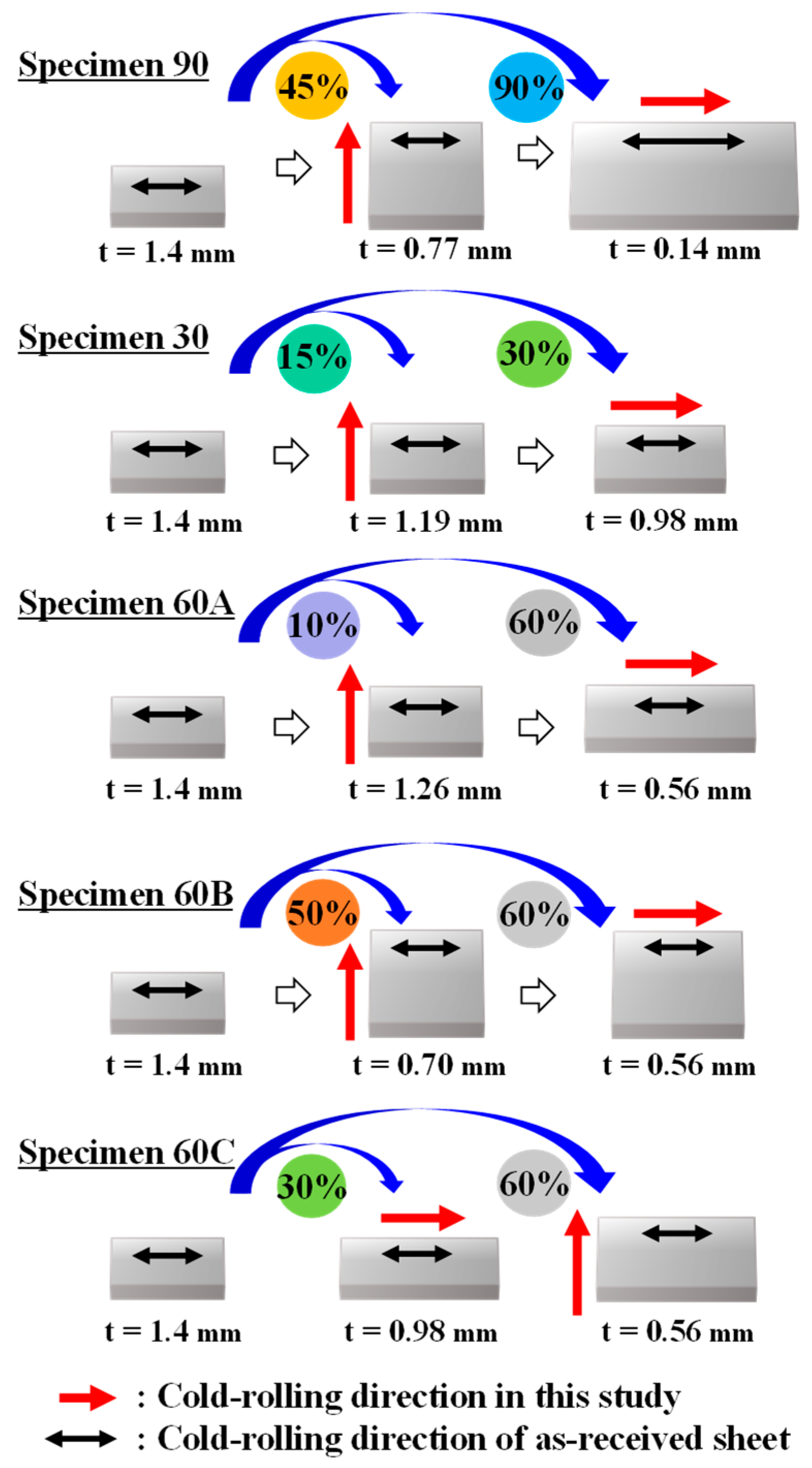
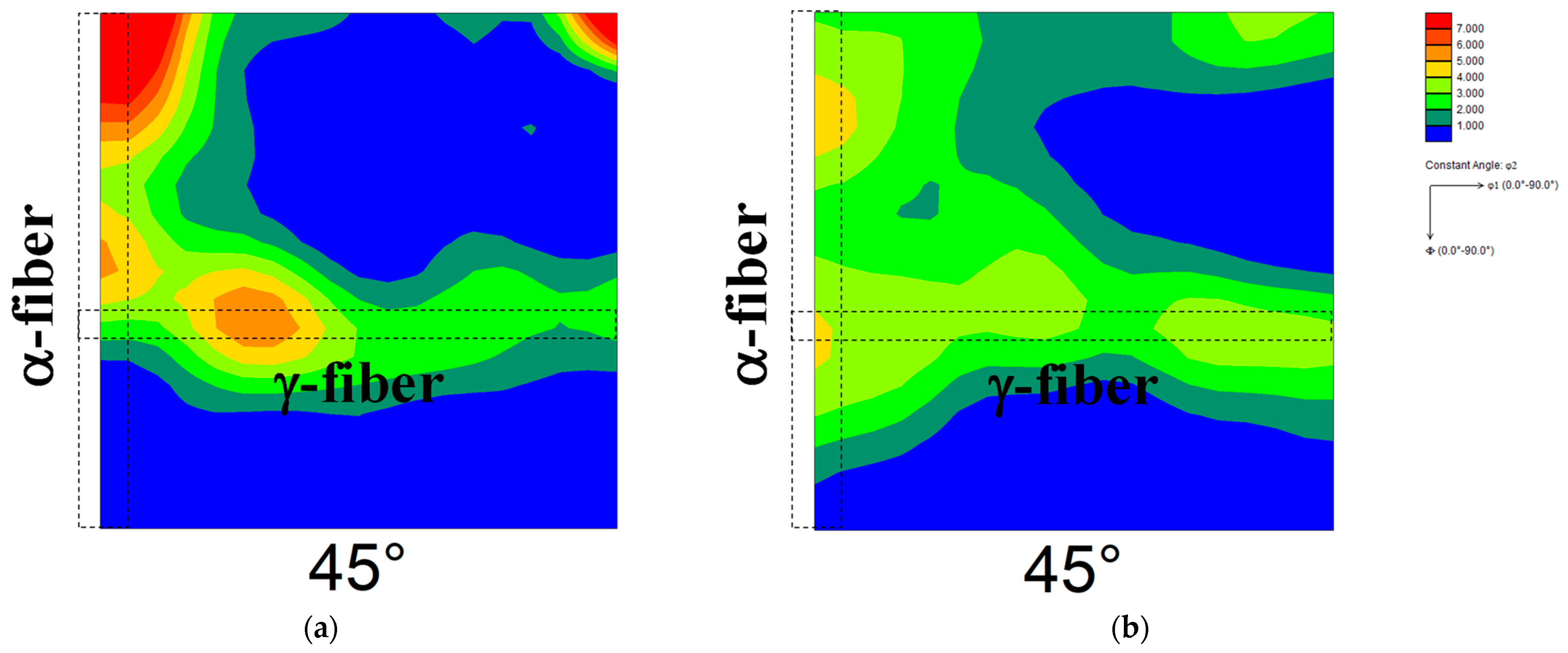

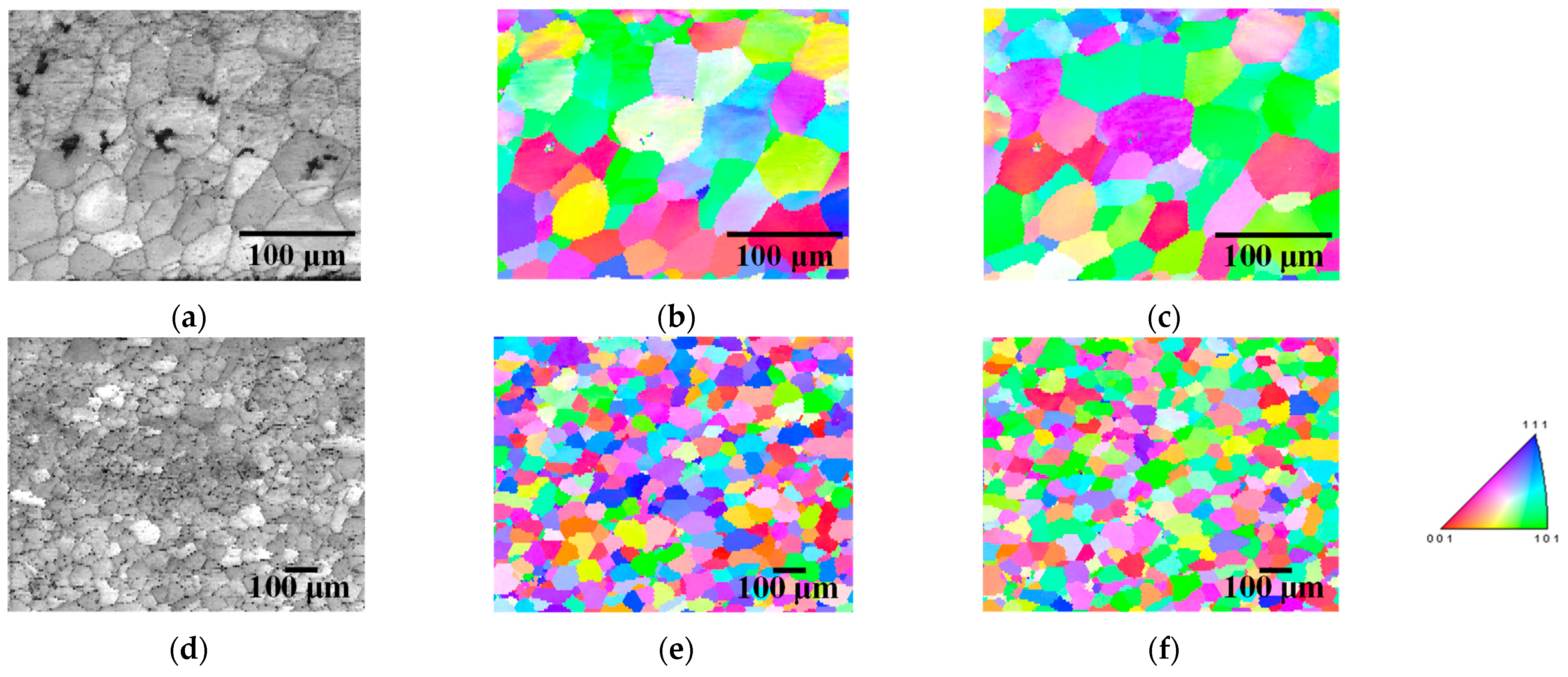
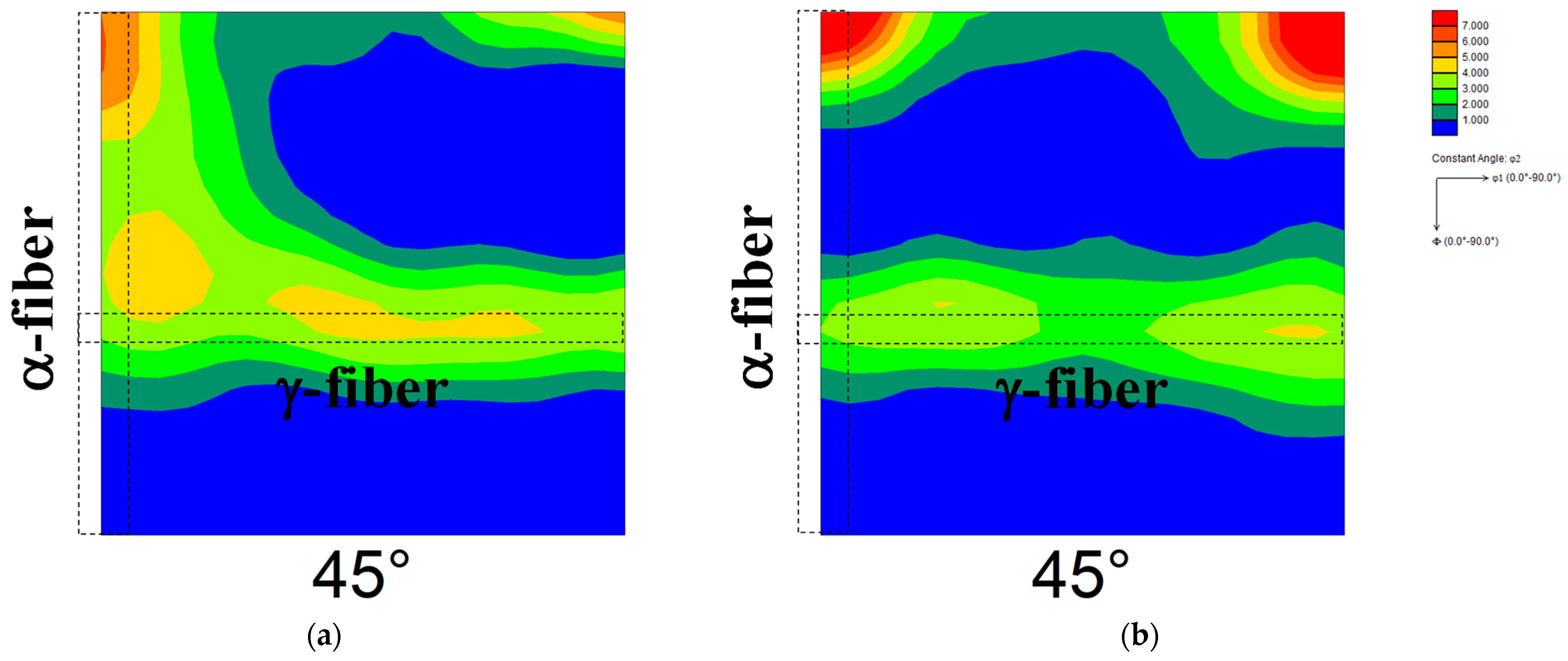
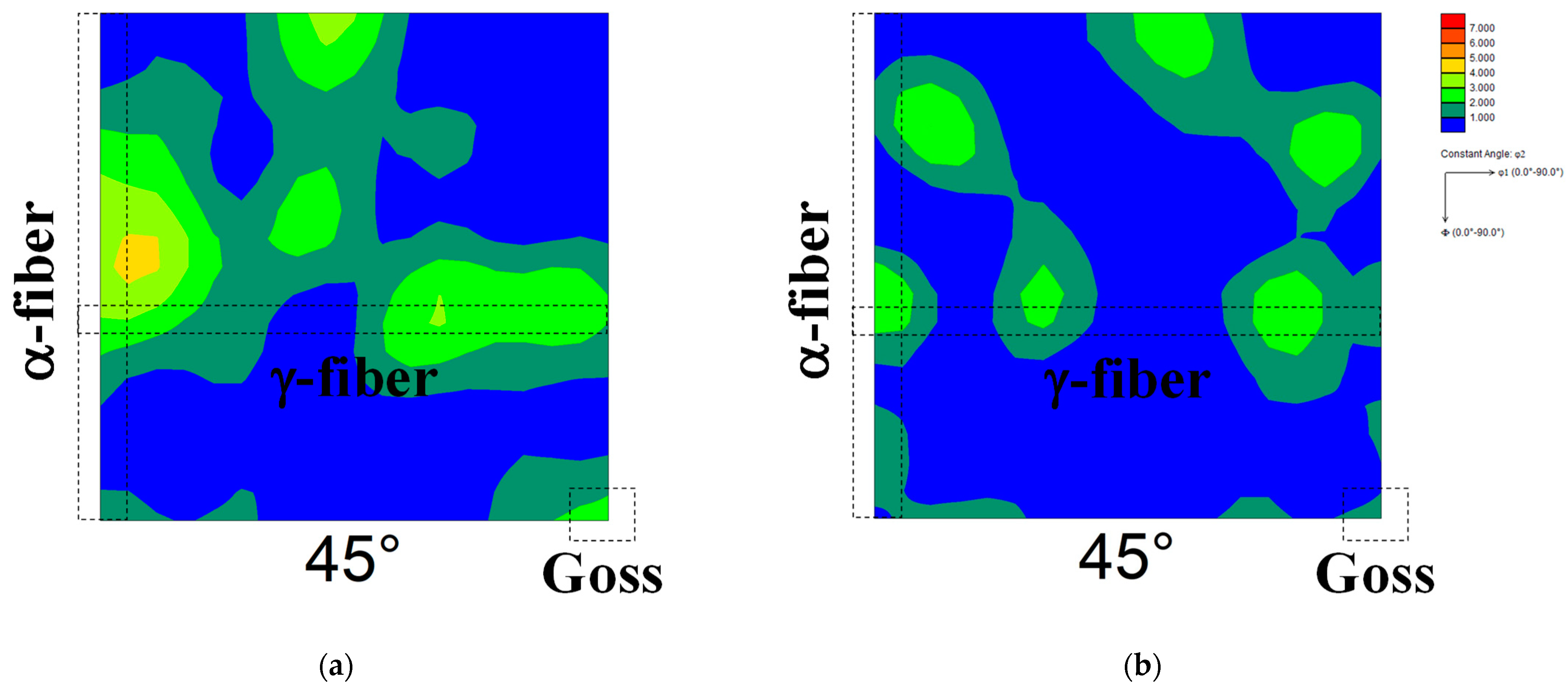
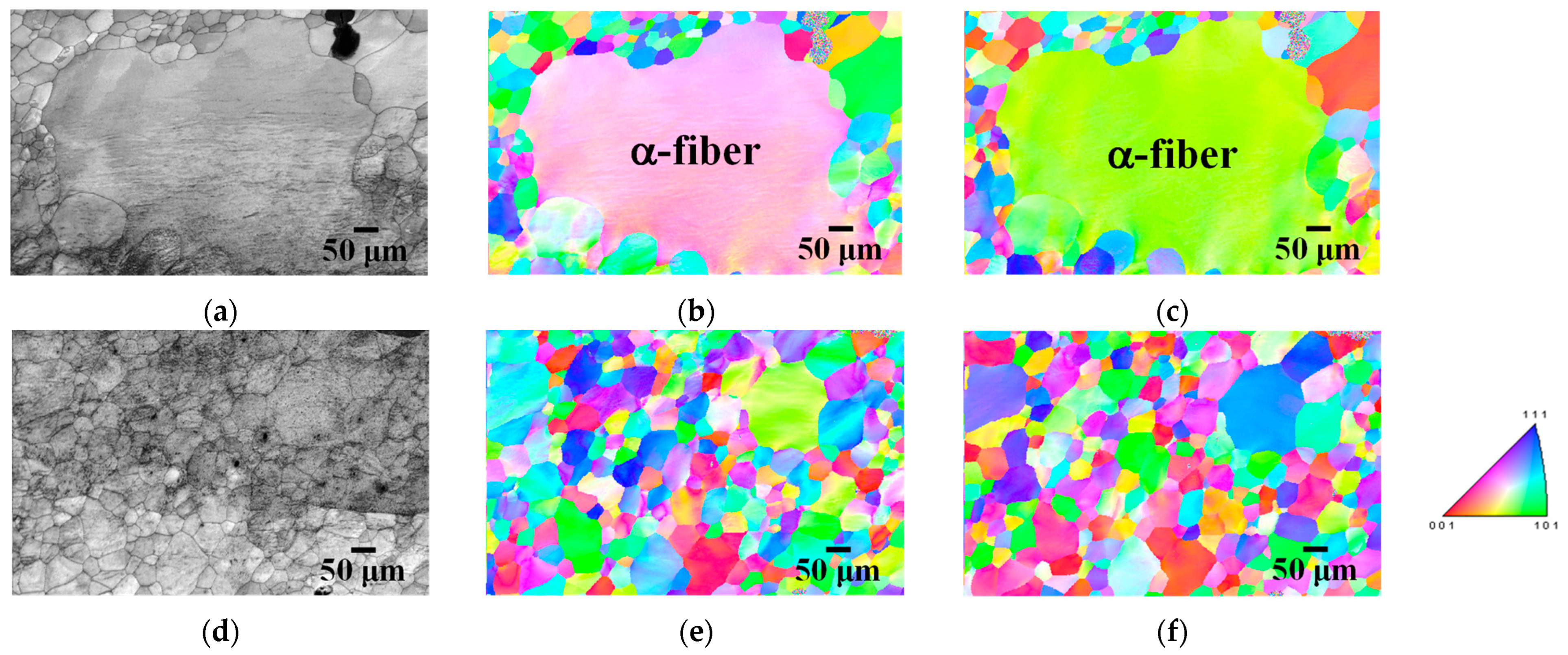

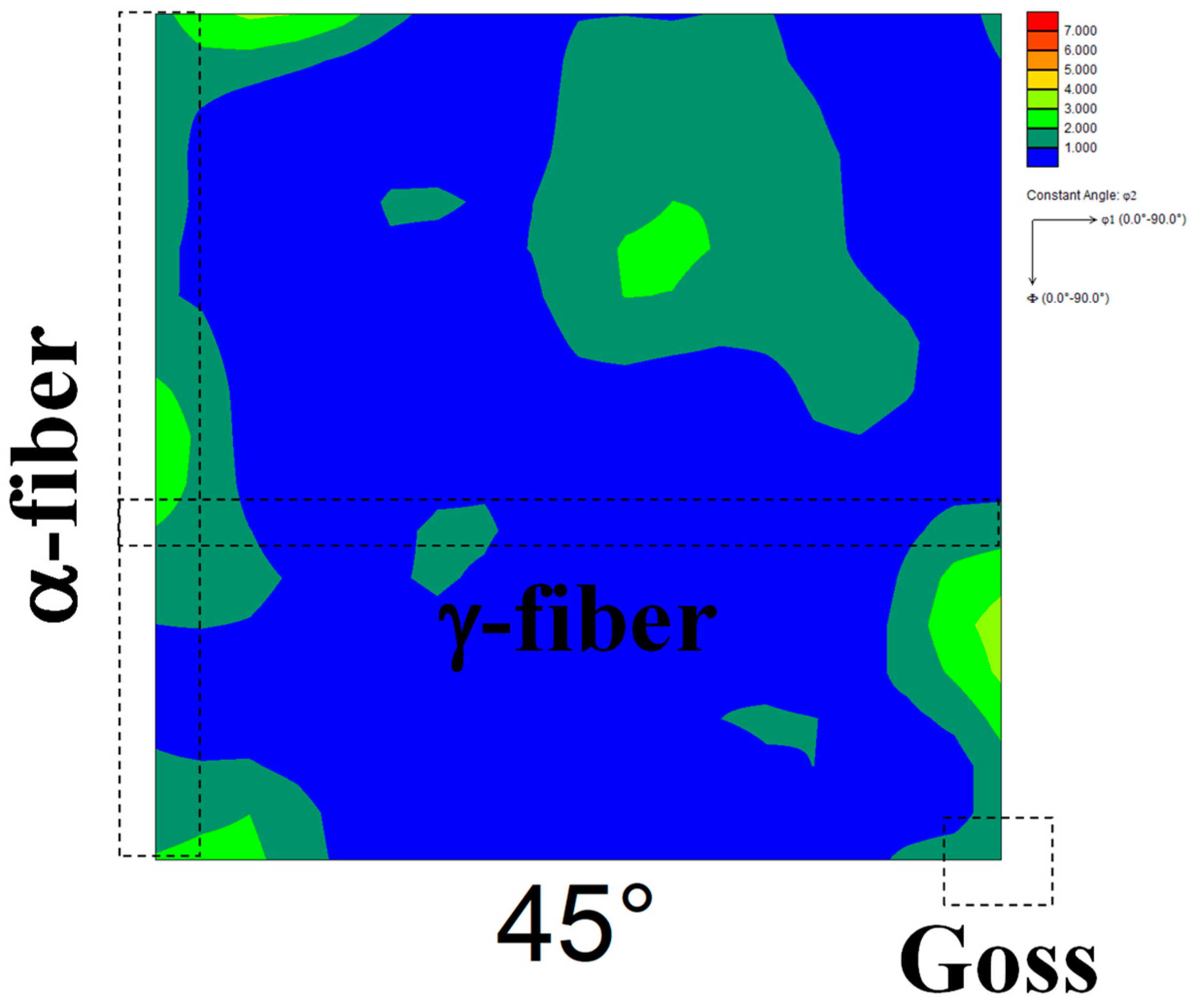

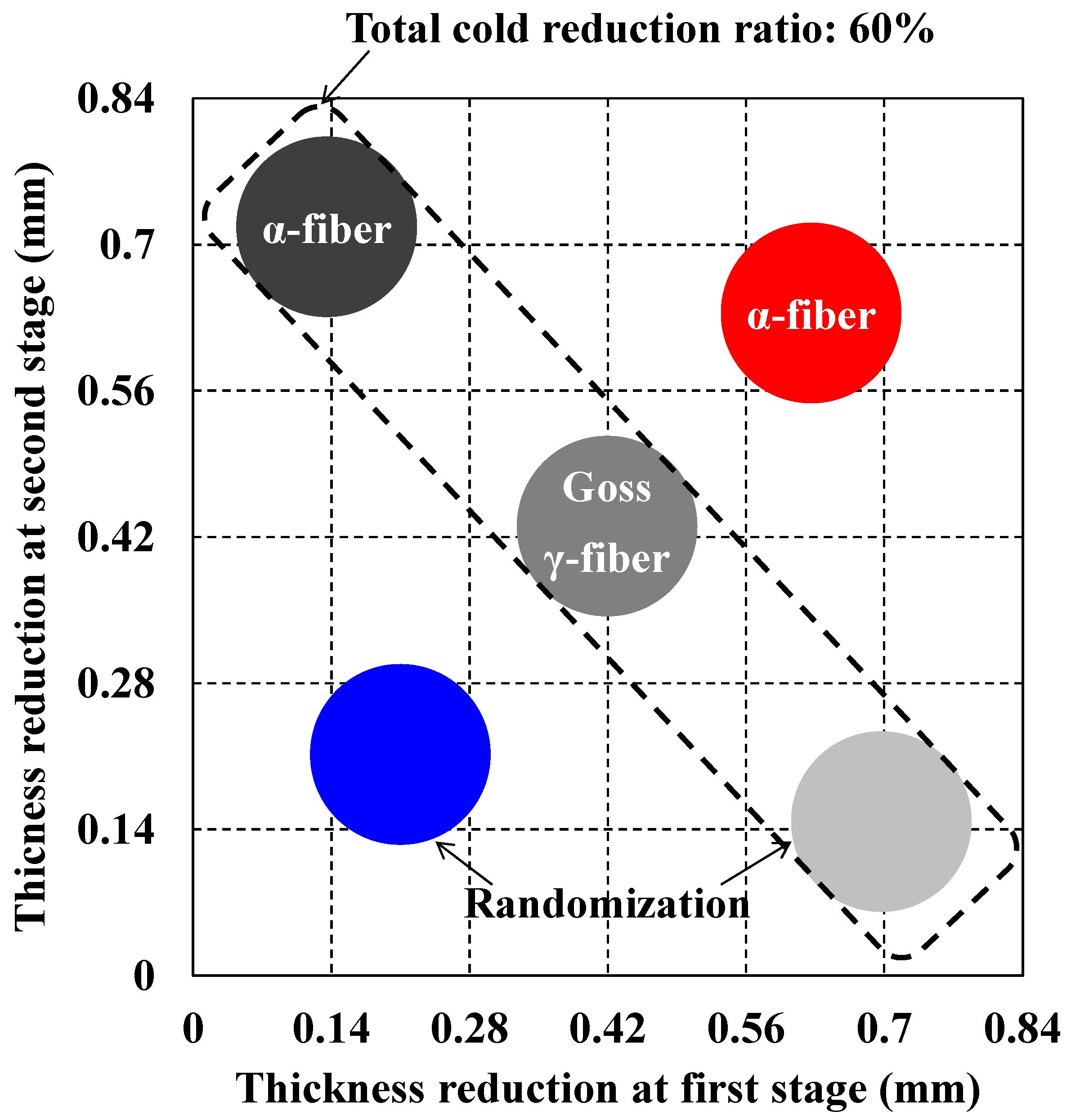



| Factors | Value |
|---|---|
| Cold reduction ratio in the vertical direction against the cold-rolling direction of the as-received sheet | 1.55 |
| Cold reduction ratio in the as-received sheet’s cold-rolling direction | 1.55 |
| Order of cold-rolling direction | 1.56 |
| Heating rate | 1.44 |
| Annealing temperature | 5.97 |
| Holding time at annealing temperature | 1.07 |
Disclaimer/Publisher’s Note: The statements, opinions and data contained in all publications are solely those of the individual author(s) and contributor(s) and not of MDPI and/or the editor(s). MDPI and/or the editor(s) disclaim responsibility for any injury to people or property resulting from any ideas, methods, instructions or products referred to in the content. |
© 2024 by the authors. Licensee MDPI, Basel, Switzerland. This article is an open access article distributed under the terms and conditions of the Creative Commons Attribution (CC BY) license (https://creativecommons.org/licenses/by/4.0/).
Share and Cite
Sumida, T.; Sugiura, K.; Ogawa, T.; Chen, T.-T.; Sun, F.; Adachi, Y.; Yamaguchi, A.; Matsubara, Y. Machine Learning-Aided Analysis of the Rolling and Recrystallization Textures of Pure Iron with Different Cold Reduction Ratios and Cold-Rolling Directions. Materials 2024, 17, 3402. https://doi.org/10.3390/ma17143402
Sumida T, Sugiura K, Ogawa T, Chen T-T, Sun F, Adachi Y, Yamaguchi A, Matsubara Y. Machine Learning-Aided Analysis of the Rolling and Recrystallization Textures of Pure Iron with Different Cold Reduction Ratios and Cold-Rolling Directions. Materials. 2024; 17(14):3402. https://doi.org/10.3390/ma17143402
Chicago/Turabian StyleSumida, Takumi, Keiya Sugiura, Toshio Ogawa, Ta-Te Chen, Fei Sun, Yoshitaka Adachi, Atsushi Yamaguchi, and Yukihiro Matsubara. 2024. "Machine Learning-Aided Analysis of the Rolling and Recrystallization Textures of Pure Iron with Different Cold Reduction Ratios and Cold-Rolling Directions" Materials 17, no. 14: 3402. https://doi.org/10.3390/ma17143402





